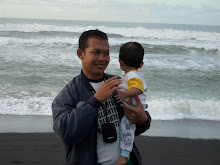The curves on the building were designed to appear random. The architect has been quoted[by whom?] as saying that "the randomness of the curves are designed to catch the light". When it was opened to the public in 1997, it was immediately hailed as one of the world's most spectacular buildings in the style of Deconstructivism, although Gehry does not associate himself with that architectural movement. Architect Philip Johnson called it "the greatest building of our time".[5]
The museum's design and construction serve as an object lesson in Gehry's style and method. Like many of Gehry's other works, it has a structure that consists of radically sculpted, organic contours. Sited as it is in a port town, it is intended to resemble a ship. Its brilliantly reflective titanium panels resemble fish scales, echoing the other organic life (and, in particular, fish-like) forms that recur commonly in Gehry's designs, as well as the river Nervión upon which the museum sits. Also in typical Gehry fashion, the building is uniquely a product of the period's technology. Computer Aided Three Dimensional Interactive Application (CATIA) and visualizations were used heavily in the structure's design.
Computer simulations of the building's structure made it feasible to build shapes that architects of earlier eras would have found nearly impossible to construct. While the museum is a spectacular monument from the river, at street level it is quite modest and does not overwhelm its traditional surroundings.[citation needed] The museum was opened as part of a revitalization effort for the city of Bilbao and for the Basque Country. Almost immediately after its opening, the Guggenheim Bilbao became a popular tourist attraction, drawing visitors from around the globe.[5] It was widely credited[by whom?] with "putting Bilbao on the map" and subsequently inspired other structures of similar design across the globe, such as the Cerritos Millennium Library in Cerritos, California.


